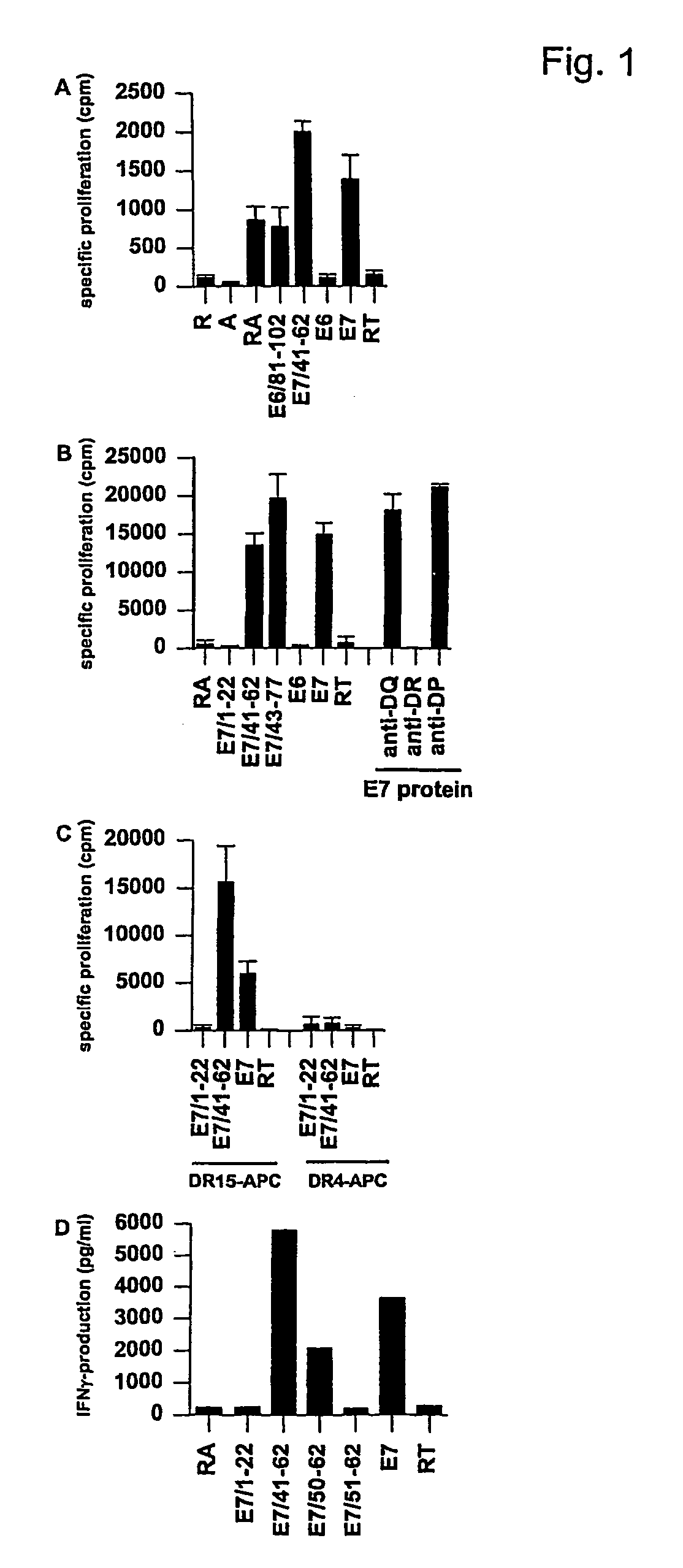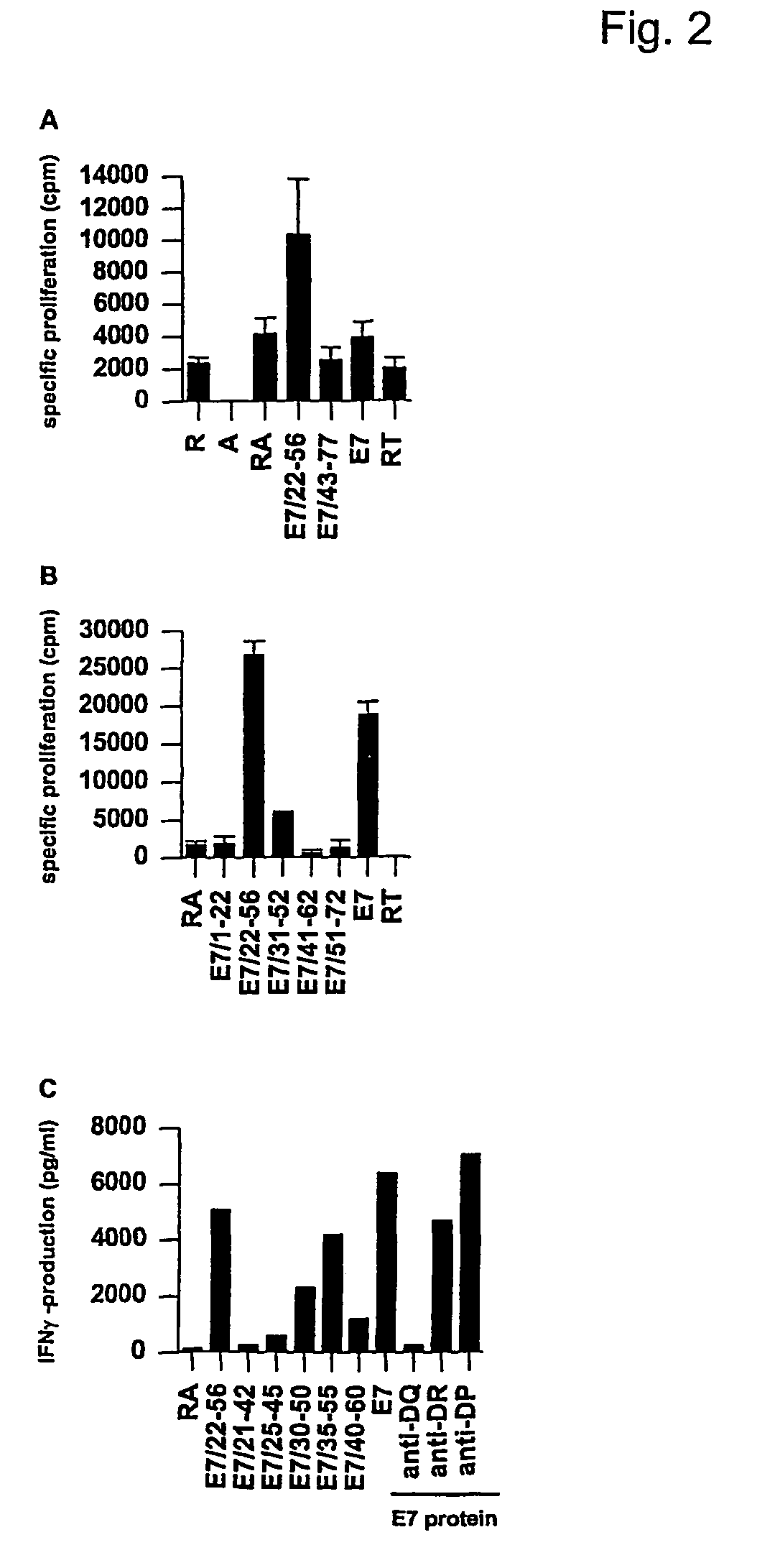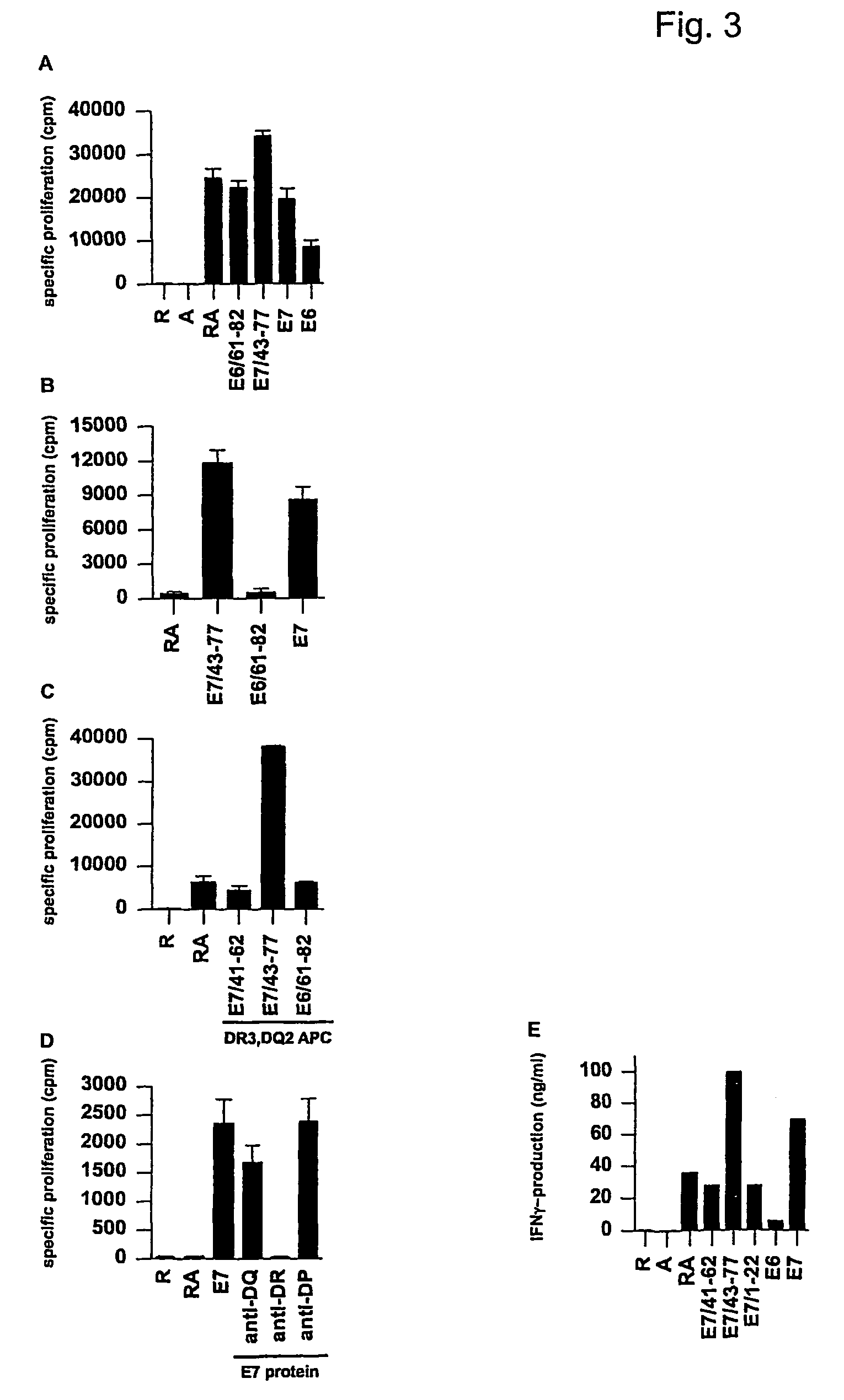Long peptides of 22-45 amino acid residues that induce and/or enhance antigen specific immune responses
a technology of antigen specificity and peptides, applied in the field of medicine, can solve the problems of inability of infected cells to withdraw from the cell cycle and differentiate, no solution for this phenomenon, and epitopes involved in this effect were therefore not suitable for immunization purposes
- Summary
- Abstract
- Description
- Claims
- Application Information
AI Technical Summary
Benefits of technology
Problems solved by technology
Method used
Image
Examples
example 1
Material and Methods
Subjects and Controls.
[0039]Samples of umbilical cord blood mononuclear cells (CBC) were used as immunologically naive controls for influenza matrix-specific responses. PBMC of HLA-typed, anonymous healthy blood bank donors (D) obtained after informed consent, served as control PBMC for HPV16 E7 and influenza matrix-specific responses. Since these donors are anonymous, no additional data is available. However, donors with a known recent history of infection, including abnormal pap-smear, were, as part of normal regulations, discouraged to donate blood. The study of subjects (S; Table I) with CIN or cervical carcinoma in this paper was nested in the “CIRCLE study” that investigates cellular immunity against HPV16 infected cervical lesions. Women presenting with histologically proven CIN III or cervical carcinoma at the department of gynecology of the Leiden University Medical Center (LUMC) were, after informed consent, enrolled in this study. The study design was ...
example 2
Materials and Methods
Lymphocytes
[0057]Peripheral blood mononuclear cells (PBMC) and serum of HLA-typed anonymous healthy blood donors were obtained after informed consent. Because these donors are anonymous, no data on medical history are available. Importantly, donors with a known recent history of infection, including abnormal pap-smear were, as part of normal regulations, discouraged to donate blood.
Antigens
[0058]A set of peptides spanning the whole HPV16 E2 protein consisting of 23 overlapping peptides, 22 of which have a length of 30 amino acids and one of which (E2331-365) has a length of 35 amino acids, was used. These peptides share an overlap of 15 amino acids. For epitope fine-mapping and the determination of cross-reactivity of HPV16-E2 specific Th-clones, peptides with a length of 15 and 20 amino acids were used. The peptides spanning the Influenza Matrix 1 protein of A / PR / 8 / 34, which were used as control peptides in ELISPOT assays, consisted of 16 30-mer peptides overla...
example 3
Material and Methods
Subjects and Controls
[0075]PBMC of anonymous healthy blood bank donors (D) were obtained. Since these donors are anonymous, no additional data is available. However, donors with a known recent history of infection, including abnormal pap-smear, were, as part of normal regulations, discouraged to donate blood.
[0076]The study of subjects (S; Table II) with CIN or cervical carcinoma in this paper was nested in the “CIRCLE study” that investigates cellular immunity against HPV16 infected cervical lesions. Women presenting with histologically proven CIN III or cervical carcinoma at the department of gynecology of the Leiden University Medical Center (LUMC) were, after informed consent, enrolled in this study. The study design was approved by the ethics committee of the LUMC. Blood was drawn at day of treatment. Subjects with CIN III were treated by LEEP or cold knife conization. In case of stage IB-IIA a radical hysterectomy was performed. Subjects were typed for HPV1...
PUM
| Property | Measurement | Unit |
|---|---|---|
| Fraction | aaaaa | aaaaa |
| Fraction | aaaaa | aaaaa |
| Fraction | aaaaa | aaaaa |
Abstract
Description
Claims
Application Information
 Login to View More
Login to View More - R&D
- Intellectual Property
- Life Sciences
- Materials
- Tech Scout
- Unparalleled Data Quality
- Higher Quality Content
- 60% Fewer Hallucinations
Browse by: Latest US Patents, China's latest patents, Technical Efficacy Thesaurus, Application Domain, Technology Topic, Popular Technical Reports.
© 2025 PatSnap. All rights reserved.Legal|Privacy policy|Modern Slavery Act Transparency Statement|Sitemap|About US| Contact US: help@patsnap.com



